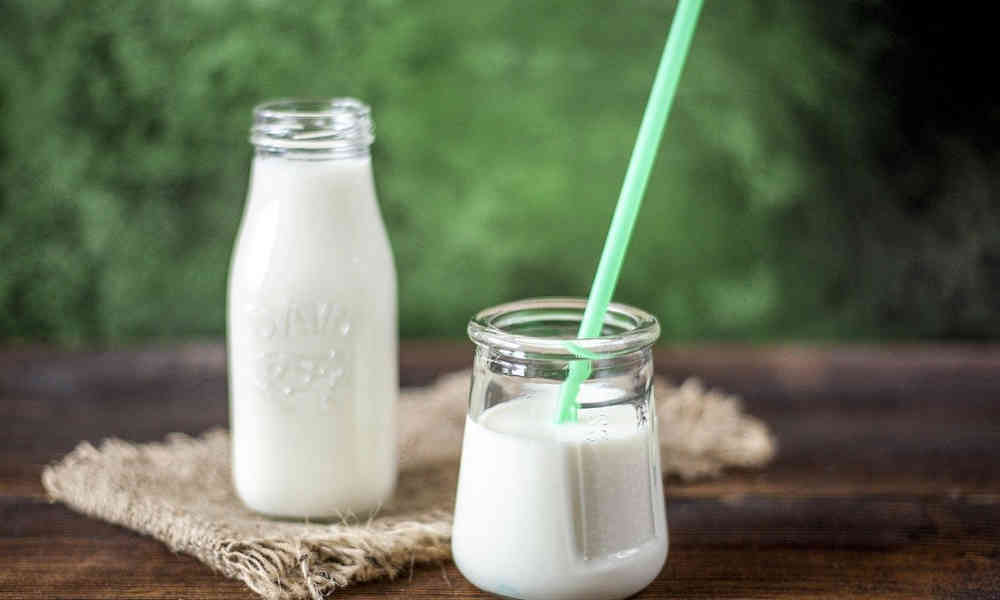8 Foods That Contain More Calcium Than Milk
If you’re looking for more calcium in your diet, try eating leafy green vegetables. Leafy greens, especially the darker ones, have higher calcium content. One cup of collard greens has a whopping 266 mg of calcium! They go with any meal and are delicious as side dishes in stews, stir-fries, and salads. They also make a great addition to cereal, oats, and milk!

Amaranth
Several grains are fortified with calcium. One grain-based food that’s high in calcium is amaranth. Amaranth leaves contain nearly 21% of the Daily Value (DV) for calcium. A cup of cooked amaranth seeds contains 9% of the DV. These are also rich in vitamins A and C. They’re a healthy addition to cereals, soups, or sandwiches.
Amaranth is one of the few foods that actually have more calcium per serving than milk. Its protein content is nearly the same as that of other grains, yet it exceeds milk’s calcium content by 4 times. Milk has 120 mg of calcium per 100 grams, while amaranth seeds and leaves have more than twice that amount. It also contains a significant amount of fiber, a nutrient that is vital to healthy blood sugar levels and satiety.
Amaranth is a grain that is free of gluten. It is high in fiber, protein, and essential lysine, which can improve digestion and strengthen bones. It also has a pleasantly sweet taste and can reduce appetite.
Cabbage Kale
If you want to learn more about the nutritional value of kale, read on. This green leafy vegetable is similar to cabbage and is edible well into winter. In fact, light frost can make the leaves sweet and tasty. As a member of the brassica family, kale is available in a variety of colors. It contains more iron per calorie than beef. Iron is necessary for the transport of oxygen throughout the body.
If you are looking for a plant-based source of calcium, Chinese cabbage is a great option. One cup of Chinese cabbage contains 316 milligrams of calcium. Chinese cabbage is available in regular heads and baby varieties and can be used in stir-fries or as a side dish in a recipe like Miso-glazed chicken with bok choy. Cabbage is also a good source of Vitamin K, which helps keep blood pressure under control and promotes healthy blood clotting. As part of the legume family, kale is considered a vegetable and a source of calcium.
Seeds
While dairy products are an excellent source of calcium, there are many foods with more calcium than milk. You can also get this mineral from seeds. Some seeds have more calcium than milk, such as sesame, poppy, and chia seeds. Just a tablespoon of chia seeds provides approximately 177 milligrams of calcium per tablespoon. Sesame seeds are particularly rich in calcium, but other varieties are also good sources of the mineral.
Tofu
Another source of calcium that’s higher in bioavailability is tofu. Half a cup of regular tofu contains 434 milligrams of calcium compared to just 100 milligrams in milk. Plus, you can use tofu in cheese recipes and smoothies. And you can even make almond butter. Almonds are a great source of calcium and fiber, which makes them a healthy choice.
Tofu is an excellent protein source, and if you’re a vegetarian, it makes an excellent meat alternative. It’s also cheap, easy to prepare, and incredibly versatile. In addition, tofu is also gluten-free, contains zero cholesterol, and is high in protein.
Both milk and tofu contain calcium, but tofu contains more riboflavin, pantothenic acid, Vitamin B12, folate, and vitamin D than does milk. Both contain significant amounts of protein and dietary fiber, but tofu contains more calcium and less sugar than milk. Milk also contains significant amounts of iron and potassium, while tofu is a better source of both of these nutrients than milk.
Some tofu manufacturers use calcium sulfate, which helps to solidify soy milk and add calcium to tofu. A typical serving of firm tofu contains about 300 mg of calcium, which is about 30 percent of your recommended daily intake. Tofu also contains protein and antioxidants called polyphenols, which can reduce the risk of various types of cancer. Therefore, it’s important to make sure to choose a tofu brand with the adequate calcium content.
Soy
While milk and soy products are closely related, dairy products contain more nutrients than plant-based alternatives. For example, fortified soy milk has twice the calcium of regular milk but has fewer calories per 100 grams. For those looking for a healthier milk alternative, consider buying fortified soy milk, which is available in most health food stores and supermarkets. Soy is a good source of protein and vitamin D and is free from the harmful cholesterol found in cow’s milk.
A recent study found that women who consumed more soy or fewer milk proteins had lower urinary Ca excretion compared to women who drank milk. This reduction may represent a protective effect against bone loss. But the results were mixed when it came to bone deposition and resorption. And the study’s limitations were revealed by a significant difference between women who drank more milk or less soy and those who consumed the least amount of either.
Almonds
In addition to their rich calcium content, almonds are rich in Omega-3 fatty acids, fiber, magnesium, and vitamin E. A serving of almonds contains more calcium than one cup of cow’s milk. Almonds also contain 13 grams of healthy unsaturated fats, which may reduce total and “bad” cholesterol. They can be added to a variety of recipes, including salads, granola, and plant-based burger patties.
Almonds are not technically a nut, but they are classified as tree nuts. These nut varieties are found in crackers, chocolates, energy bars, sauces, and cold cuts of meat. Despite the fact that almonds contain a significant amount of calcium, they are not the best food source. Almonds may also contain oxalate, a compound that binds to calcium and magnesium and reduces their availability.
A serving of almonds contains 6% of your daily requirement for calcium. However, you can also get more calcium by eating other foods. A one-ounce serving of almonds contains 320 milligrams of calcium, and one cup of almonds has 3.5 grams of fiber. Almonds are also a good choice as a snack because they can replace sweets. So what are you waiting for? Give these delicious nuts a try.
Molasses
If you are concerned that molasses is too sweet, think again. It actually contains more calcium than milk. The good news is that molasses has a very stable shelf life and rarely goes bad. A jar of Golden Barrel molasses will keep for four years when properly stored. You can purchase it in health food stores and online. It’s also great for animals, as blackstrap molasses is a rich source of calcium for livestock. It can be added to feed for extra stimulation and nutrition.
The calorie content of blackstrap molasses is the lowest of all cane products. It also contains high levels of iron, magnesium, and vitamin B6. In addition to calcium, molasses also contains selenium and other minerals, including magnesium. In addition, some orange juice is fortified with calcium to help your body absorb the mineral. While you should avoid drinking it in excess, it is still a great source of calcium.
Garlic
Many people wonder whether garlic contains more calcium than milk. Interestingly, this herb is packed with minerals. In fact, two cloves of garlic provide more calcium than milk! Plus, it also has numerous other benefits. Garlic is one of nature’s most powerful antioxidants. It also helps fight free radicals that cause cancer. But if calcium isn’t your main concern, you can always substitute milk with another food source.





